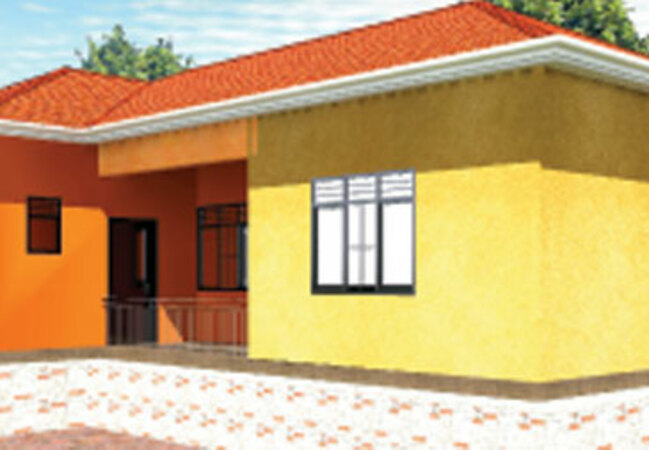A house's exterior should reflect its interior
Well picked out tiles, paint and stones will give you good finishing and let your house exterior shine.
HOMES & CONSTRUCTION
The exterior wall finish of your house contributes to its magnifi cence, increases its value and gives the first impression of the splendour of the interior.
Fred Lukoda, a construction engineer, says when buying materials for exterior finishing, go for those that are durable. Look out for dust and water-friendly colours that complement the style of your house.
Also, ensure that the fi nishing is trendy. "Home exteriors are subject to wear
and tear by the elements of nature such as weather. Therefore, one should ensure that exteriors are laid well and with good quality materials," Lukoda advises.
There are certain portions of the exterior that once done, are expensive and difficult to re-do.
Fortunately, there are various finishing materials on the market. The materials vary The stone fi nish on this design gives a natural, more durable and virtually
maintenance-free exterior wall.
The developer should also know that stones are not only resistant to weather, wear and tear, but also do not fade.
However, you cannot use them to do the entire fi nishing since they can only be used up to a certain height.
The cost of construction is relatively higher since it requires skilled labour, more cement and sand.

Stones
David Kireli, a civil engineer, says there are a number of issues worth knowing before choosing fi nishing material, especially with this kind of design (pictured) of house.
The facing bricks used in the plan (pictured) are made of fi red clay. Therefore,
the developer should know that facing bricks come in a variety of earthy and eye-catching colours.
According to Kireli, brick-wall fi nishing patterns are easily matched and have a
texture that creates an attractive exterior fi nish.
When it comes to face-lifting, facing bricks only require varnishing, making maintenance relatively easy.
However, some bricks may be porous and absorb moisture. This leads to structural
damage and mould growth. They can also break easily when hit by a hard surface.
Tiles
Tiles, Kireli says, provide a more attractive fi nish and are easy to clean. It just takes a brush, detergent and water. If your house is exposed to dust, then tiles are good for your wall fi nishing. They are the best option to use on exterior walls that are vulnerable to water penetration.
Unlike facing bricks, tiles are harder, so they are not easy to smash. Tiles are, however, expensive. One also needs to hire a highly skilled person to fi x them.
Over time, tiles are more likely to fade and replacement is equally expensive. You need to look out for genuine tiles.
Plaster and paint
This is one of the commonest fi nishing and cheapest fi nishing option. It requires regular painting, which may also be expensive in the long run.
It also leaves the wall open to damage as compared to other options. However, dustfriendly paints are available on the market.